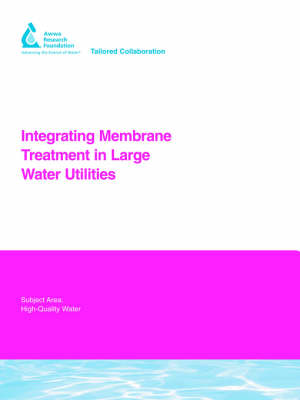Water Research Foundation Report
2 total works
Design, Operation, and Maintenance for Sustainable Underground Storage Facilities
by H. Bouwer, R. Pyne, J. Brown, D. St. Germain, T. Morris, Christopher J Brown, Peter Dillon, and M. Rycus
Published 13 September 2009
Achieving a sustainable, reliable drinking water supply has emerged in recent years as an increasingly important goal, not only in the United States but also worldwide. This is being driven by population growth, increasing water demands, declining groundwater levels, contamination of water sources, greater awareness of adverse environmental impacts, concern regarding the potential impacts of global warming, and many other factors. Among the many methods that are being applied to achieve this goal, managed aquifer recharge is proving to be viable and cost-effective. Recent advances in the science of aquifer recharge, including the geochemistry, microbiology, and hydraulics, provide a strong foundation for the successful implementation of aquifer recharge projects. However, to achieve success, it is necessary to understand the lessons learned, taking advantage of good ideas that worked and not repeating the ideas that did not work.
The overall goal of this project was to identify technical variables that result in successful design, operation, and maintenance of sustainable underground storage (SUS) facilities. The key objectives of the project were to increase the available knowledge base of SUS facilities throughout the United States, survey a variety underground storage facilities, identify and evaluate sites where SUS performance failed to meet objectives, address the use of SUS to reduce the vulnerability of water facilities, and create an easy-to-use, practical guidance document and outreach program to distribute research findings.
The final report discusses surface and well recharge methods and includes a concise summary of the most important lessons learned from the 22 operating and failed recharge sites that were visited. It also includes a proposed analytical approach that may be applied for water utilities to reduce their vulnerability to service interruption and thereby enhance their system reliability. The appendix includes case studies for the 18 operating and four failed SUS facilities that were visited as part of this project. These are presented on a CD, providing useful perspectives regarding how different water utility systems have approached the need for SUS.
The overall goal of this project was to identify technical variables that result in successful design, operation, and maintenance of sustainable underground storage (SUS) facilities. The key objectives of the project were to increase the available knowledge base of SUS facilities throughout the United States, survey a variety underground storage facilities, identify and evaluate sites where SUS performance failed to meet objectives, address the use of SUS to reduce the vulnerability of water facilities, and create an easy-to-use, practical guidance document and outreach program to distribute research findings.
The final report discusses surface and well recharge methods and includes a concise summary of the most important lessons learned from the 22 operating and failed recharge sites that were visited. It also includes a proposed analytical approach that may be applied for water utilities to reduce their vulnerability to service interruption and thereby enhance their system reliability. The appendix includes case studies for the 18 operating and four failed SUS facilities that were visited as part of this project. These are presented on a CD, providing useful perspectives regarding how different water utility systems have approached the need for SUS.
Integrating Membrane Treatment in Large Water Utilities
by J. Brown and D. Hugaboom
Published 31 July 2005
Microfiltration and ultrafiltration (MF/UF) have evolved into widely accepted methods of water filtration and disinfection. Their evolution from industrial applications began with filtration of clean water supplies not requiring pretreatment to use on waters requiring significant treatment prior to filtration. Cost and system design innovations have led to the increase in the size of MF/UF facilities. In recent years, retrofits of granular media filtration facilities with MF/UF have been explored by researchers, engineers, and system vendors in order to reduce the cost of implementing the technology. Several examples of retrofit facilities with varying degrees of existing infrastructure reuse exist; however, many of the retrofit projects do not reuse equipment common to both MF/UF and granular media filters. The objective of this project was to investigate potential cost-saving infrastructure reuse options for membrane retrofits of granular media filtration cells. Of key interest was the feasibility of retrofitting granular media filter cells with membranes operating within the hydraulic gradeline of the plant, essentially a direct exchange of media filtration with membrane filtration. Originally published by AwwaRF for its subscribers in 2004.

